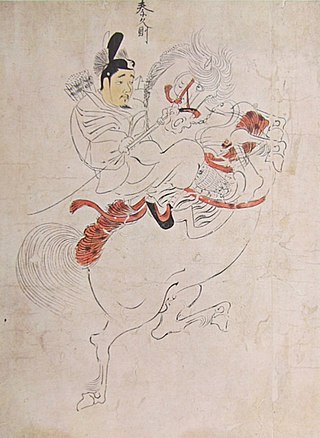Top Qs
Timeline
Chat
Perspective
Nise-e
From Wikipedia, the free encyclopedia
Remove ads
Nise-e (Japanese: 似絵, Hepburn: nisee; lit. 'likeness picture') were a style of portraiture popular in the court circles of Japan's Kamakura period.[1] Prior to the 12th century Japanese art was purely religious in character, but nise-e introduced the realistic depiction of lay figures such as courtiers and samurai.[1][2] The popularity of nise-e helped to end the taboo against artistic depictions of the emperor, with one of earliest nise-e to depict a living emperor being a portrait of Emperor Hanazono by Gōshin.[3] The aim of a nise-e portrait was to capture a man's character with a few simple lines; the work served as a veneration of his accomplishments.[1]

Fujiwara Takanobu is generally considered to have originated the nise-e style and technique.[4] He innovated the use of jutting, angular outlines, and dense swaths of color which came to characterize nise-e portraiture as a whole.[5] Takanobu's influence is seen in the works of his son Fujiwara Nobuzane, and descendants Tametsugu, Korenobu, Tamenobu, and Gōshin, who continued to develop the nise-e school alongside others, such as Shinkai and Tametada.[6][1][7] Nise-e portraiture also greatly influenced the 18th century portrait style nigao-e (lit. 'likeness head'), pioneered by Katsukawa Shunshō, in response to a desire for actor portraits with realistic and expressive facial features.[8]
Remove ads
References
Wikiwand - on
Seamless Wikipedia browsing. On steroids.
Remove ads
